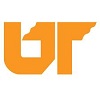
PART 1: UT MBA students engage in non-profit projects each spring
 (EDITOR’S NOTE: This is the first in a six-part series describing one of the projects undertaken this year by a team of MBA students from the University of Tennessee’s Knoxville campus. We are examining the experience from the perspectives of the client, the students, the mentor/teacher, and the University. Today’s story provides the background on the annual spring undertaking that has involved 97 engagements with non-profits in the last decade.)
(EDITOR’S NOTE: This is the first in a six-part series describing one of the projects undertaken this year by a team of MBA students from the University of Tennessee’s Knoxville campus. We are examining the experience from the perspectives of the client, the students, the mentor/teacher, and the University. Today’s story provides the background on the annual spring undertaking that has involved 97 engagements with non-profits in the last decade.)
By Tom Ballard, Director of Innovation and Entrepreneurial Initiatives, Pershing Yoakley & Associates, P.C.
Earlier this year, we published a two-part series on Pat Richardson and Glenn Swift, two Instructors in the MBA program at the University of Tennessee (UT), and their efforts to promote critical thinking as colleagues in the Anderson Center for Entrepreneurship and Innovation.
The duo, commonly referred to as “P&G,” described an initiative Swift launched in 2004 targeted to students with a concentration in entrepreneurship. It has grown into a capstone program for all full-time MBA students at the end of their first year. The students are divided into teams to work on one or more critical problems facing local nonprofit organizations.
We were intrigued with the concept and asked for the opportunity to spotlight one of the 2014 clients after the work was completed. Earlier this summer, we have interviewed the client (Booth Kammann, President and Chief Executive Officer of the Girl Scout Council of the Southern Appalachians, Inc.), the MBA student team lead (Kendra Wills), the mentor/teacher (local businessman Kevin Frazier), and “P&G.”
For Richardson and Swift, the seven-week projects are all about helping enhance the capabilities of the students to address actual problems in an environment as close to real-life as possible. They are also an important way that a land-grant university can give back something significant to its community.
“There is a framework they are learning each week,” Richardson says about the structured process that they use with the students. He compares it to the approach than any consultant would employ. Swift adds that it is all about “transformational change.”
The duo takes what they describe as a managing partner role, selecting 14 to 15 non-profit clients annually from the many requests they receive.
“People come to us all the time asking for help,” Richardson says. So, how do they make a decision on the non-profits selected annually?
One of their requirements is that the client’s top executive and a Board member, usually the Chair of the Board of Directors, must be involved. Another is that the need must be real and actionable. If a previous client asks for help with a new project, “P&G” want to know the status of the recommendations from the earlier activity. If the previous recommendations have not been implemented, their answer will be a polite, but firm “no.”
“There is only so much we can do in the limited time,” Swift says of the annual seven-week period and their desire to help the MBA students make an impact on the clients they serve.
A key early step in the process is to develop the project teams. Since the activity now involves all full-time MBA students, Swift and Richardson work with the MBA leadership in the College of Business Administration to assign students based on the project specifics and the individual student’s experience and expertise.
Swift describes the first several weeks of the engagement as the “What is” and “Why is” phases. The students, with their mentors, are baselining the client and developing an understanding of the reasons the client is in the situation that it finds itself. Over the next two to three weeks, each student team benchmarks other organizations that faced similar problems.
“How have other organizations around the country solved this problem,” Swifts says of a process that Richardson describes it as a “creative excursion.”
The final few weeks involve developing the recommendations and, more important, answering the question: “If the client pulls the lever on the recommendations, what is the likely result?”
So, what was their assessment of the project? We’ll answer that question in the final article in this series.
NEXT UP: The reason for the project according to the Girl Scout’s Booth Kammann.
Like what you've read?
Forward to a friend!

